► Costs £86k
► Packs 320bhp, weighs as little as 810kg, raw and raucous
► Limited to 499 examples globally, now on sale in the UK
Some might say that while modern cars aren’t rubbish, they are boring. Pretty much every Volkswagen Group product drives the same and, oh look, there’s another hypercar with pointless gazillions of horsepower and a slightly different body configuration. The easiest way to understand the Jannarelly Design-1 is as a kind of antidote to this.
It looks like it’s arrived from some comic book alternate history of racing car development since the 1960s. The upper bodywork is all swooping curves and muscular haunches, but with substantial sections scalloped out as your eyes descend towards the rather purposeful carbonfibre addenda that encapsulates its lower portions with the promise of aerodynamic effectiveness.
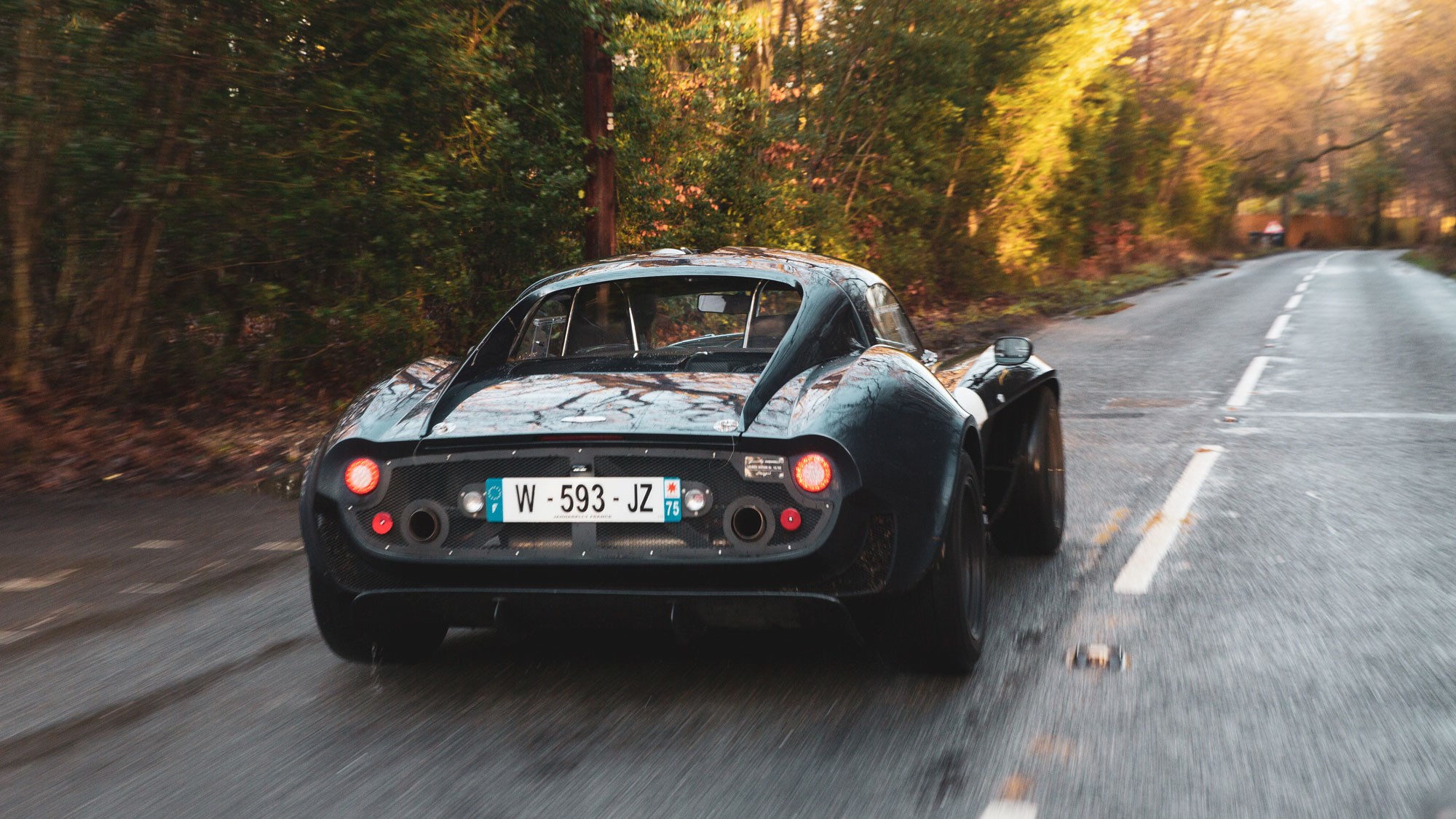
When asked if these appendages are all functional, Anthony Jannarelly – the designer behind the company – smiles and shrugs mischievously. Some, he says, before emphasising the serious point that this car is not really about out-and-out speed. It will do 0-62mph in 3.9sec, yet tops out at a mere 135mph – most hot hatches will sneer at that these days.
But then it also has power-assisted nothing, and the traction control system is optional. This with a 3.5-litre V6 sitting just behind the cabin (feeling very much as it it’s in there with you, most of the time) producing 320bhp and 274lb ft, and the whole car weighing 850kg – 810kg if you opt for carbon exterior panels instead of fibreglass. If you’re detecting the potential for adrenalin-spiking liveliness you’re not mistaken.
Give me a moment. I’m still staring at it
Don’t blame you. What might not be apparent from the pictures is that this is a tightly compact machine in the composite; at less than 3.9m long it’s shorter than the current Mazda MX-5, if also over 10cm wider. Originally the product of a carefree sketch on a plane – apocryphal-sounding but nevertheless true – it was conceived as the answer to a question about the kind of car Jannarelly himself would want to drive.
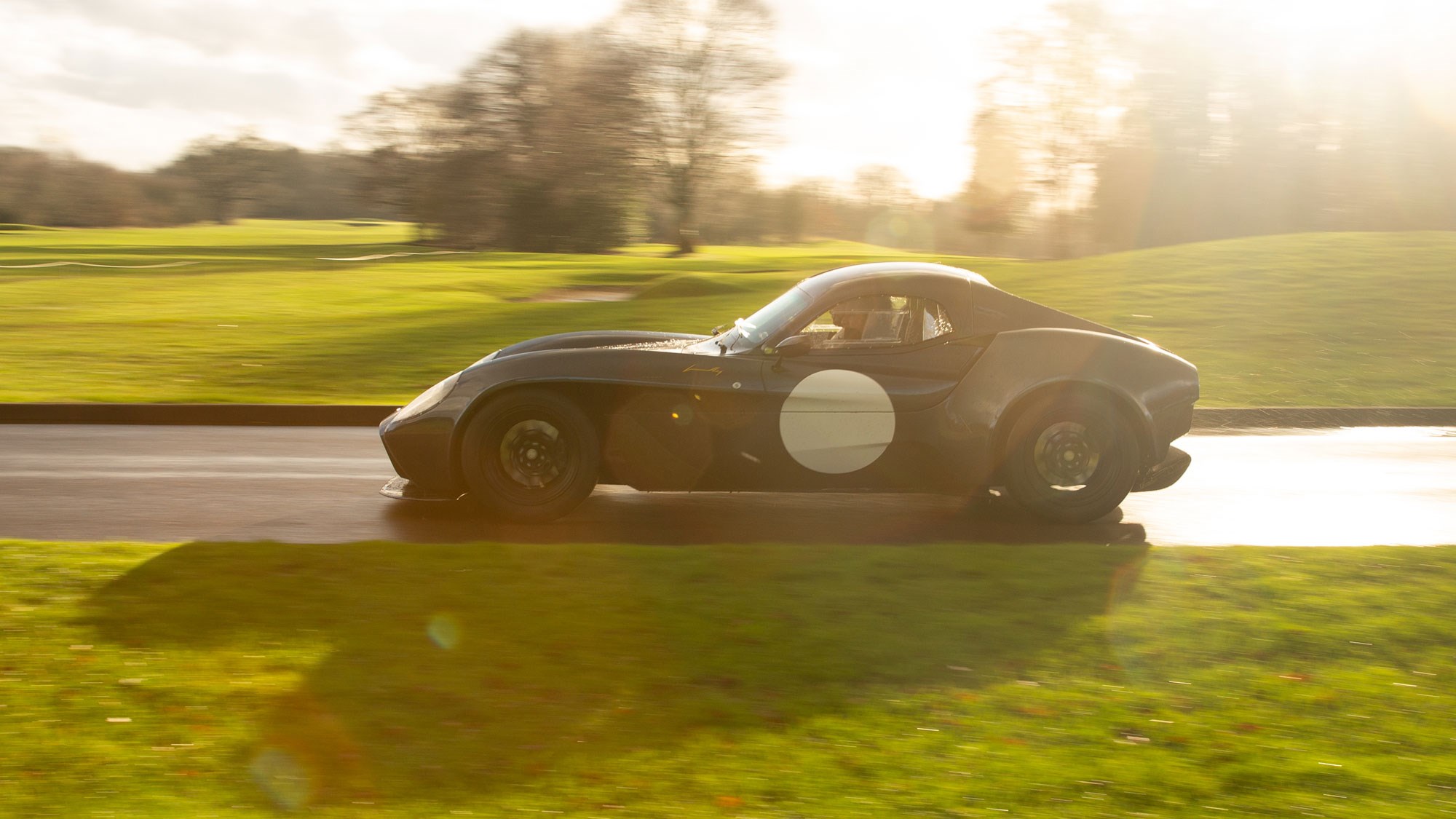
Given he was the designer at W Motors at the time – the man responsible for both the Lykan Hypersport and the Fenyr Supersport – it’s perhaps telling that he instinctively reached for a back-to-basics lightweight sportscar with a ’60s vibe.
The Design-1’s appearance resonates with cars like the Cobra and the 250 TR, but Jannarelly says that somehow instantly evocative grille opening is actually more heavily influenced by his Caterham – once you know this you can see the correlation. And while it is riffing on classic organic curves, the jutting carbon, taut ridges on the wing-tops and lipped wheelarches all add a contemporary air.
The Caterham has other parts to play in this story. An unusual kind of car in Dubai where Jannarelly is based, it brought him into contact with boat-builder and Donkevoort-owning Frederic Juillot – co-founder of the Jannarelly brand and the man responsible for physically crafting the bodywork.
Are we dealing with a coupe or a roadster here?
Despite appearances here, the Design-1 is actually first and foremost a barchetta, and you can buy it with only a slither of an aero screen to keep the flies from whacking you in the face. When it became apparent that other people would also be interested in owning such a car, Jannarelly quickly realised that additional weather protection was going to be desirable, and conjured up the hardtop arrangement you see pictured.
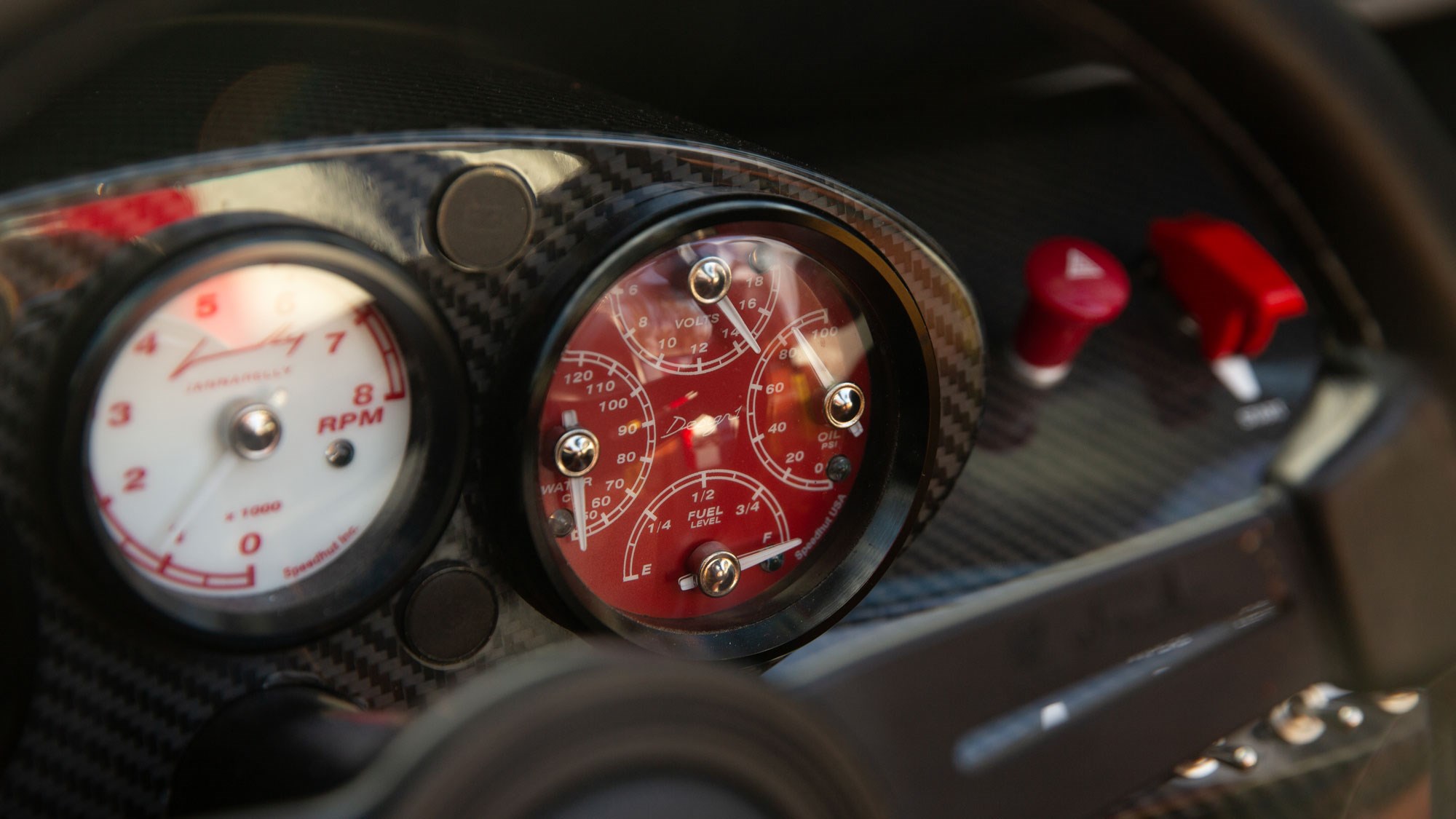
This comprises not only the more substantial windscreen and the flip-top lid – it hinges forward on gas struts to save buyers from having to squeeze themselves between the tiny half-height doors and the roofline – but also a different rear decklid complete with buttresses. The roof can be removed (by undoing a couple of screws on each side) and the decklid replaced with the flat original should you be blessed with permanently sunny days; a bikini-style soft-top is also in the works for emergency precipitation response.
There are some fun details. The hardtop decouples from its locking mechanisms on the top of the roll hoops via a swivel latch adopted from the aerospace industry. Raised, it leaves you looking down on a deliberately minimalist interior – the seats are wafer thin and a clean slab of carbonfibre forms the dashboard, adorned only by the instrument cluster, some switches and a thin strip of leather.
Poppers restrain further touches of leather around the exposed gear linkage and the cover for the central elbow rest / storage cubby; the former can be looped back on itself as kind of rudimentary repository for items such as driving gloves. All the hide and the matching the seat padding can be swapped out in moments, giving buyers the opportunity to change-up the interior look on a whim.
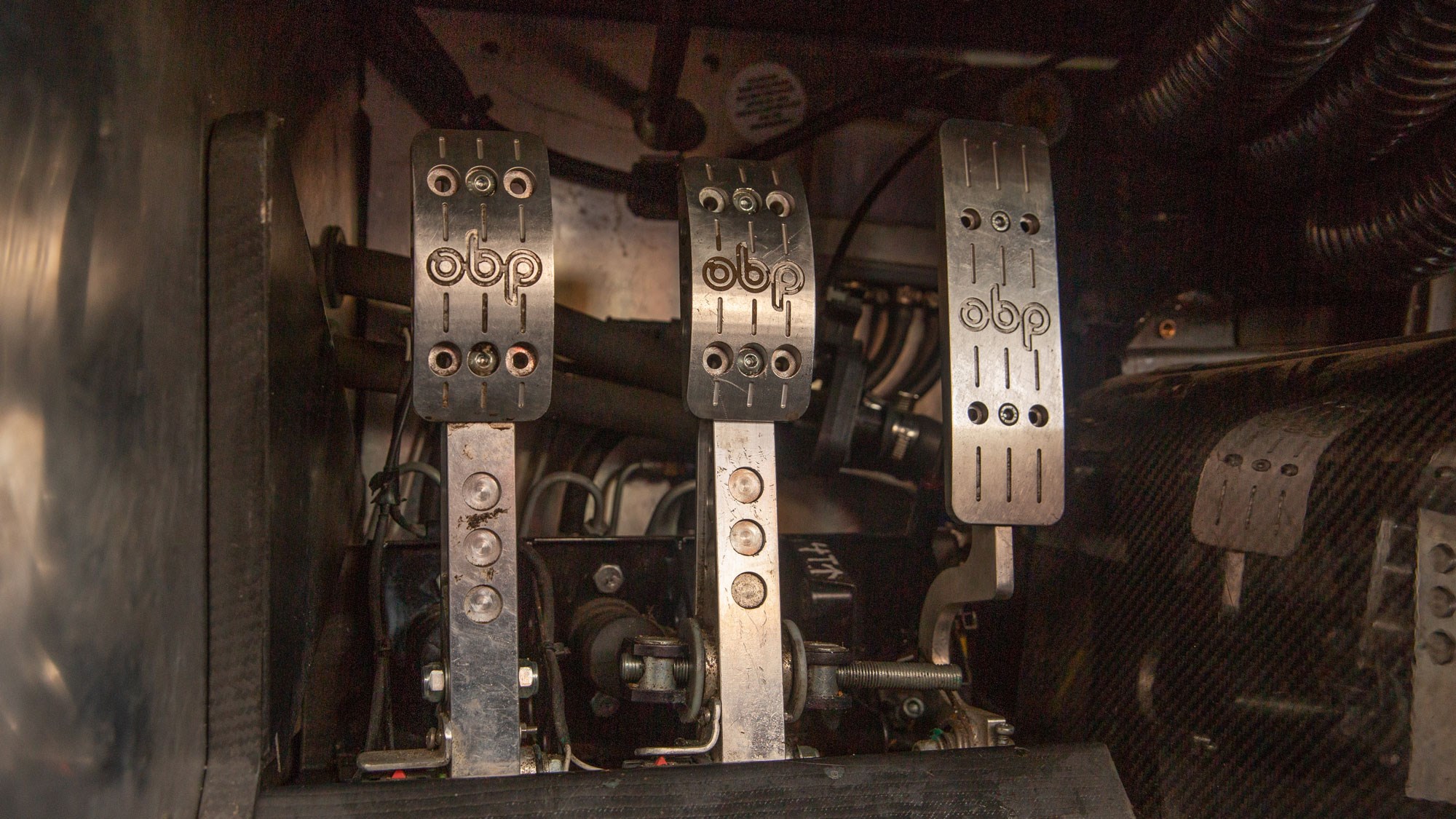
Vents at the base of the screen are the only clue that there’s air-conditioning – the controls for this are hidden under the passenger side of the dashboard – while the audio system is powered by Bluetooth and your phone, rather than a conventional headunit.
The steering wheel is a 330mm Nardi, classically styled. If you were hoping for an airbag you’ve gotten this far into the wrong review.
Who makes the Design-1’s engine and chassis?
The engine comes from Nissan – and before you turn your nose up at that, remember that Lotus uses Toyota for motivation, and Ariel uses Honda.
As you’ve probably guessed, it’s the V6 from the 350Z (and various Maximas), mounted transversely using a Nissan gearbox, a Nissan clutch and a Nissan cooling system. Everything is absolutely stock for ease, reliability and avoiding type-approval issues, though it’s controlled by a custom Link ECU rather than the standard Nissan item (which would also require miles of redundant wiring loom).
With the radiator mounted in the nose and breathing out through those vents in the bonnet, it apparently provides a lovely warm breeze if you’ve opted for the aero screen. Which should be handy in the UK.
The chassis, on the other hand, is a completely bespoke mild steel spaceframe with aluminium panelling and a great deal of triangulation. Jannarelly’s other degree is in mechanical engineering, so he designed it himself. It’s claimed to be as torsionally stiff as the Elise platform, and though also a little heavier it’s supposedly more easily repairable.
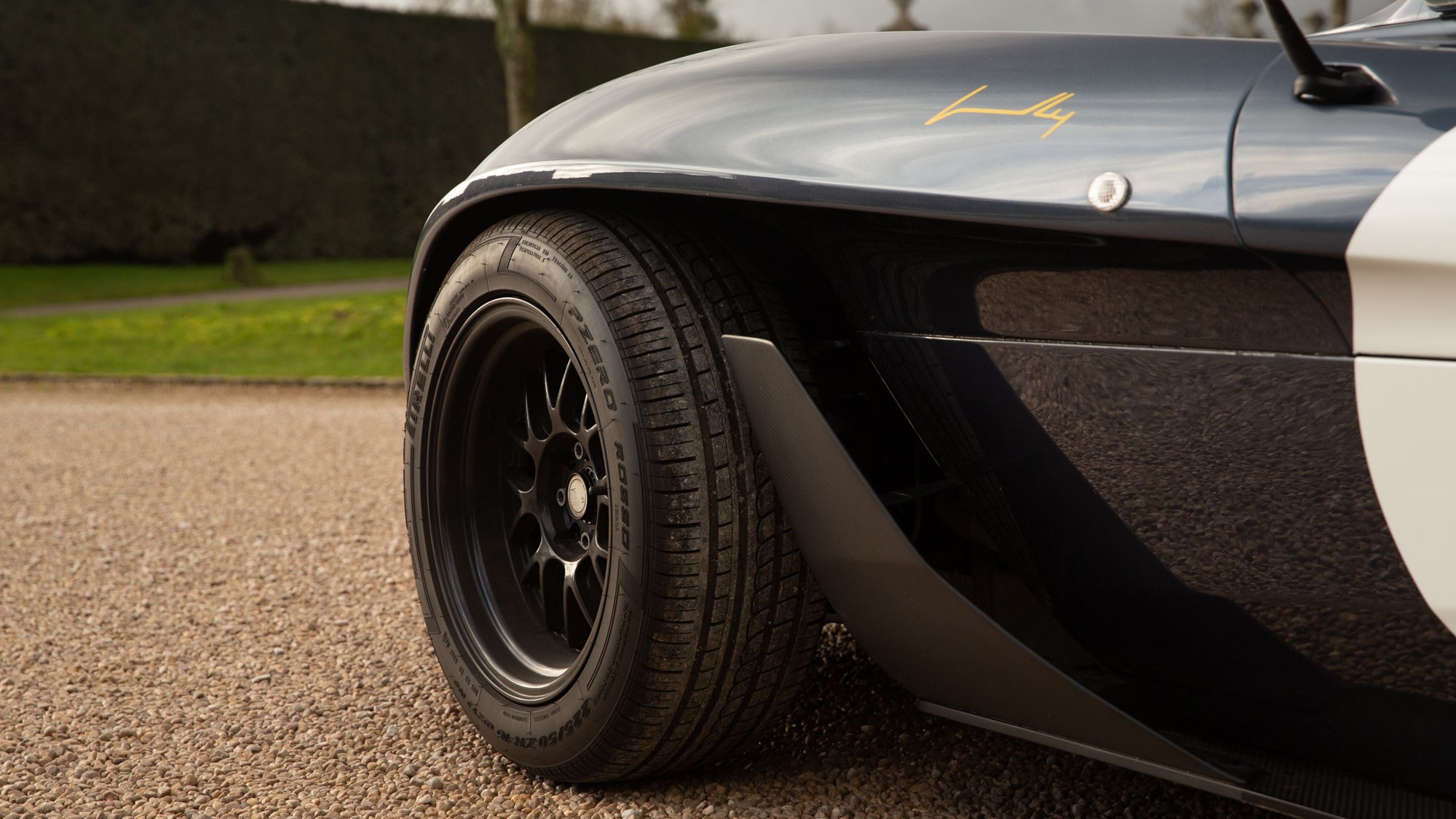
The suspension uses double wishbones – the basic geometry was done by the Campos Racing F2 team – and adjustable Nitron dampers all round, mounted in-board at the front and more conventionally at the rear. The set-up is thoroughly fine-tuneable. Which is a plus, as the car in the pictures is presently a tad low and firm for the UK’s pockmarked tarmac.
The braking system is Wilwood throughout, with no servo and no ABS. Powerful, but probably best not taken for granted.
Go on, then – what’s it like to drive?
You’ve got to get into it first.
There are no exterior door handles (‘for simplicity’), so once the roof’s out of the way you lean over the door and pull the leather strap on the inside – another nice touch of drama. The dinky doors make the side of the tub more or less low enough to step over, but you still need to position your leading foot into the cut-out in the seat base, a manoeuvre that requires a dexterous lower lumber region and a hand on the roll bar.
Once you’ve managed that you have to reel your other leg in, then wriggle down beneath the steering wheel – the optional quick-release would be a godsend here – at which point you’ll realise you’re sitting on the racing harnesses. More wriggling, and you’ll finally be belted in. The good news is that getting out is easier.
The initial intimidation factor is reasonably high. The windscreen is from a classic Mini – which gives you an idea about the width of the cabin – but laid back, so the opening is narrow. The high-sided bodywork is a tight fit for my 5’ 11”, yet there’s comfortable space for my left elbow in the door recess and I don’t have to fish around with my right hand for the gearlever. The pedals are hinged at the floor, and the aircraft-grade aluminium pedal box is adjustable. Cosy, to say the least.
You start it with a toggle switch on the dashboard, which is covered by a trigger guard like the missile release in a fighter jet, possibly the most indulgent element in the entire car. From stone cold there’s a slight smell of fuel – just a hint, scene-setting rather than unpleasant really – and as it’s January the gear linkage is a little sticky. The clutch, however, is so surprisingly docile I stall the car. But that’s just another excuse to use that starter toggle, so what the hell.
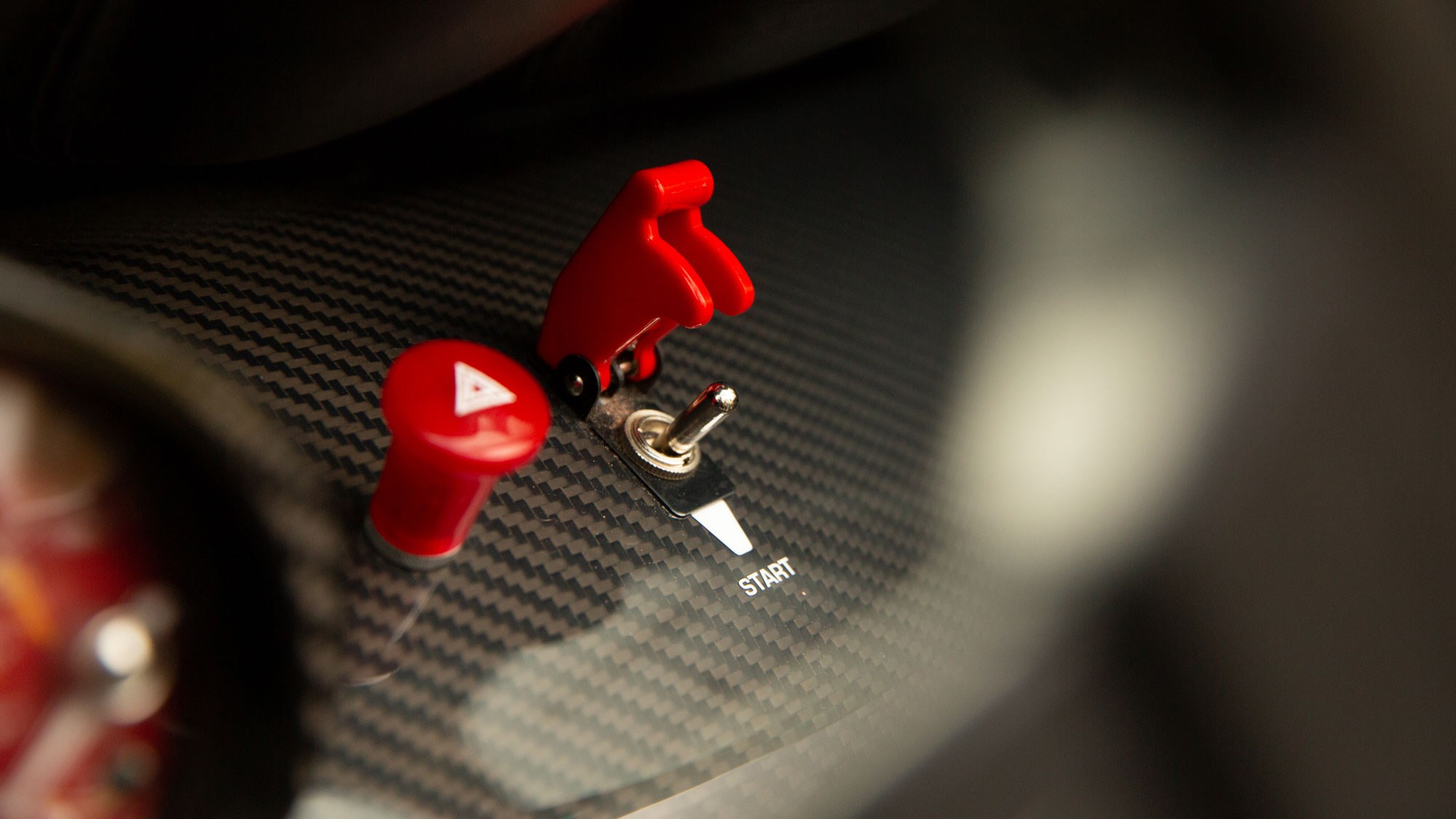
While the unassisted steering is heavy as you move off, once you’re up to about walking pace you can work it with one hand, and there’s swiftly a reassuring sense of connection rather than effort, which damps down those opening nerves. The Design-1 is firm, and low, and wide – and as a low-volume, hand-built vehicle it inevitably creaks a bit – but you can place it easily thanks to those tall front wings, and it quickly reassures you with the impression it aims to be on your side, rather than obstreperous.
As the oil warms through, the gearshift becomes similarly inclined, though you still have to make deliberate movements – it’s not a super-short wrist-flick affair. The extent that this makes you think about what you’re doing is no bad thing in an 850kg car with 3.5 mid-mounted litres when the roads are this greasy, even if the Design-1 shows no obvious sign of being anything except sure-footed. The suspension on this example shrugs off cats-eyes with a faint thump-thump-thump but crashes through potholes – albeit without being fazed.
What it most definitely is, however, is intensely and immensely alive. The steering wheel chatters and twitches constantly in your hands, and in this left-hand drive model the V6 sounds like it’s breathing right in your ear, sniffing and then snorting as you apply the throttle. This preludes the actual acceleration like some kind of coke-addled rockstar herald, before bleeding into more and more exotic levels of engine noise as you gain confidence and go deeper into the pedal travel.
In a car this light with such a decent slug of comparatively large-capacity torque, fourth gear is particularly entertaining, allowing you to explore the full range of variable-cam vocal talent. An engine that always felt lazy in the 350Z, it seems to be enjoying its new surroundings, and the Design-1 doesn’t so much accelerate as lunge, as if hurling itself bodily but purposefully at a target. The unassisted brakes require firm pressure and you have to remember there’s no ABS, but after a moment of adjustment I really didn’t give them any further thought.
How fast is it?
As the figures suggest, it’s not mind-bendingly rapid but it is certainly quick, with the promise of deeper talents as you get over the learning curve. The hyperactive steering wheel puts me in mind of an Alfa 4C – it’s rawer than any Lotus I’ve driven – except with more consistency in the response as you continue to turn and no sudden turbo torque rampages.
As such, driving the Design-1 vigorously enough to shame ordinary traffic comes relatively easily; really exploiting its full capabilities – that’s going to take time and familiarity. Frankly, though, I feel that’s exactly the point of a car like this. You hardly want to know everything about it after the first few miles, and probably not even the first few hundred.
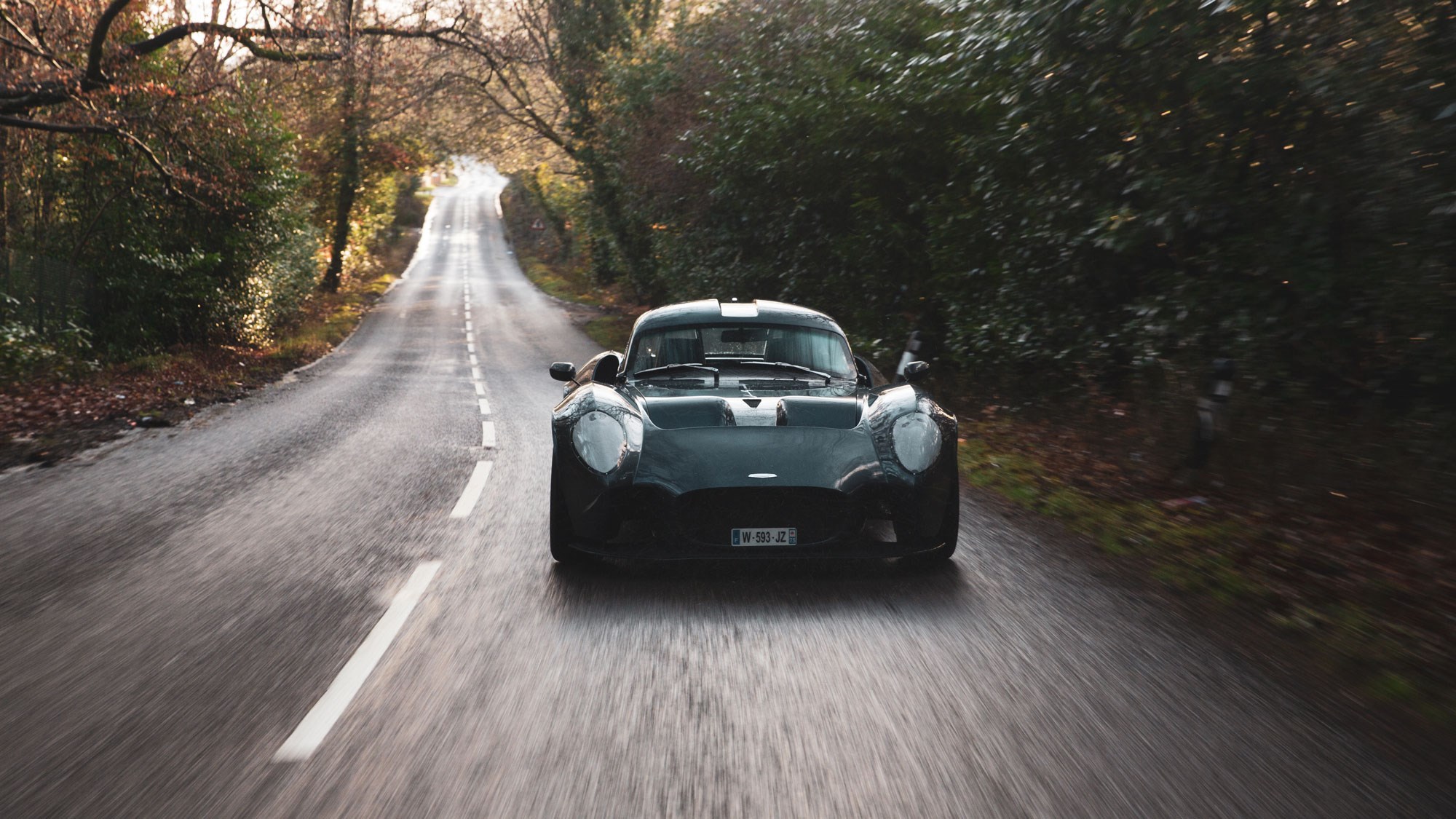
Jannarelly says the chassis is sensitive to even small tyre pressure changes, so with the fully adjustable suspension the setup tweaks currently in the works for the UK should bring useful improvements to the firmness, and if you want the sensibly measured turn-in a little sharper I’m sure it wouldn’t be an issue. That’s not to say you couldn’t live with it as is – there’s already precision aplenty and its behaviour at road speeds is impressively cohesive.
What’s more, the most unexpected aspect of the experience is just how civilised it is when cruising. That clutch is light, and at moderate rpm it’s refined enough that you can have actually have a conversation with your passenger.
So it’s worth the money, then?
At first glance, £86k for a tiny sports car from a company you’ve never heard from, built in a country hardly famous for its car industry sounds like quite a lot of cash. If you’re expecting the fit, finish and sophistication of a Porsche, you’re going to be disappointed – this is a machine built around simplicity, involvement and the sexual appeal of 1960s design. It will demand too many compromises from most buyers.
But if you’re interested in a bespoke plaything that deliberately aims to be different from the norm, it doesn’t seem that expensive to me. While it’s not hard to drive, it does demand that you engage with it, and as such feels thrillingly real from the moment it turns a wheel. Not better, just more real – like an Atom or a Caterham in a fancier frock, with a modicum of extra weather protection.